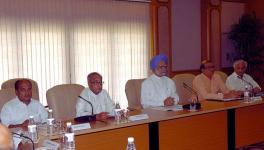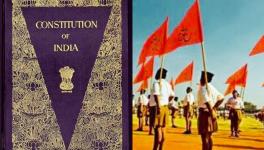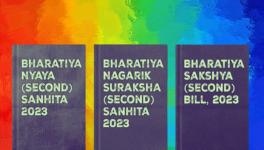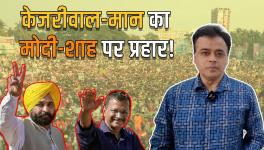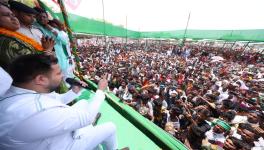We Are Seeing Political Mobilisation With Religion as its Tool
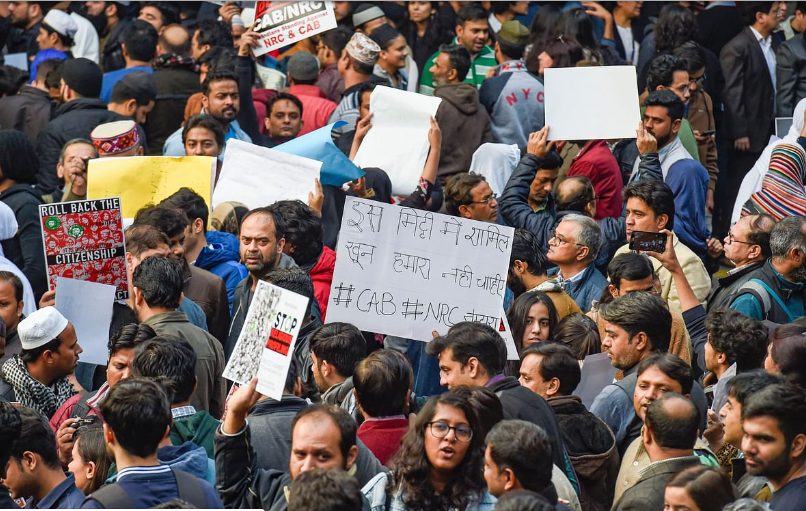
Representational Image. Image Courtesy: Free Press Journal
In the beginning of January 2020 two very disturbing events were reported from Pakistan. One was the attack on Nankana Sahib, the holy shrine where Sant Guru Nanak was born. One report said it had been desecrated, another said it had been a fight between two Muslim groups. Pakistan Prime Minister Imran Khan condemned the incident and the main accused, Imran Chishti, has been arrested. The matter related to abduction and conversion of a Sikh girl Jagjit Kaur, daughter of the panthi (who reads the holy Guru Granth) of the gurudwara. The other incident reported from Pakistan was the killing in Peshawar of a young Sikh man, Ravinder Singh, while he was was out shopping for his marriage. The Pakistan police has said that this particular killing was a conspiracy hatched by the man’s fiance.
Whatever the facts, in these condemnable attacks on the Sikh minority in Pakistan, BJP immediately found an opportunity to justify the Citizenship Amendment Act (CAA) 2019. Incidentally, CAA is discriminatory and relates citizenship with religion, which is against the norms of India’s Constitution. There is constant propaganda that the proportion of Hindus is falling drastically in Pakistan and Bangladesh. Amit Shah, the Home Minister, has stated that in Pakistan the population of Hindus has come down from 23% at the time of Partition to 3.7% at present. And in Bangladesh it has come down from 22% to 8%.
There is no denying that the religious minorities got a rough deal in both these countries, but these figures are wide off the mark. They do not take into account the painful out-migrations which took place from these regions, first at the time of Partition and then at the time when Bangladesh became an independent republic.
Pakistan’s census figures tell a different story from the Indian minister’s version: During their first census held in 1951, the overall percentage of non-Muslims in Pakistan (East and West included) was 14.2%. Of this, in West Pakistan (now Pakistan), their overall percentage was 3.44 and in East Pakistan (now Bangladesh) it was 23.2.
In the census held in Pakistan in 1998, the percentage of minorities became 3.72%, marking a very slight increase—not decline. As far as Bangladesh is concerned the share of non-Muslims has gone down significantly, to 9.6% in 2011.
Yet, what is not disclosed is that the largest minority group in Pakistan [estimated at between 0.22 and 2.2% of the population] is that of the Ahmadiyyas. They number between 2.9 and 5.2 million and are not recognised as Muslims in Pakistan. And, in Bangladesh, the major out-migration of Hindus took place after the Pakistan Army’s atrocities against them in then East Pakistan.
The United Nations’ data shows a 17% increase in the number of refugees between 2016-2019—but the largest influx was from Tibet and Sri Lanka.
The condition of minorities is an index of the strength of a democracy. Most South Asian countries have not been able to sustain democratic values. Pakistan’s journey as a republic began with Muhammad Ali Jinnah’s classic speech announcing secularism as a central credo. This 11 August, 1947 speech laid the direction of state policy, which would leave people of all faiths free to practice their religion. Soon enough, the two-nation theory and the logic of Pakistan as a separate state for Muslim took over. The army stepped in and dictatorship was imposed there, intermittently coming back to haunt its people. Then Zia-ul-Haq Islamised the state in collusion with preachers. That is how the popular formulation about Pakistan came to exist that it is ruled by three As: Army, America and Allah (religious preachers).
Bangladesh had a different trajectory. Its very formation was a nail in the coffin of the two-nation theory, which propounds religion as the basis of a nation-state. Bangladesh began as a secular republic but communal and secular forces kept struggling for dominance. In 1988, Bangladesh also became an Islamic republic. At another level, even Myanmar, in the grips of military dictatorship, is also seeing a hard as democratic forces try to retain their presence. Democratic or not, the army and the Buddhist sanghas are strong in Myanmar as well. The most visible result of this is the persecution of Rohingya Muslims.
A similar phenomenon is unfolding in Sri Lanka as well, where the Buddhist Sanghas and army are in a position to dictate terms to the political class, irrespective of who is in power. Muslim and Christian minorities are victims of their persecution, with the ethnic and religious minorities including the Tamil Hindus and the Christians, etc, suffer at their hands.
So far, India had the best prospects in South Asia. Democracy, pluralism and secularism flourished here and the Constitution, which enshrines secularism, was the outcome of its freedom struggle, whose values were perpetuated by leaders such as Mahatma Gandhi and Jawaharlal Nehru. Yet, poverty and illiteracy plagued the minorities, and their overall marginalisation worsened as rising communal forces resorted to identity politics and indulged in propaganda against minorities.
Instead of the rest of South Asia following India’s lead into better infrastructure and a political culture of liberalism, India has started following Pakistan’s footsteps. This retrograde march is visible in the issues which have dominated the public and political space over the last few years: a temple dedicated to the Hindu god Rama, ‘ghar wapasi’, alleged love ‘jihad’, and cows.
India’s regression into a religious polity that mimics the events of Pakistan was nicely presented by the late Pakistani poet Fahmida Riaz in Tum Bilkul Hum Jaise Nikley—‘You Are Exactly Like Us’. Resisting communal forces, always an arduous task, is more difficult by the day as the phenomenon called fundamentalism, communalism or religious nationalism stalks India. Surely this phenomenon has nothing to do with religion as practised by the great saints and Sufis of India. We are witnessing a political mobilisation in which religion is a tool.
The author is a social activist and commentator. The views are personal.
Get the latest reports & analysis with people's perspective on Protests, movements & deep analytical videos, discussions of the current affairs in your Telegram app. Subscribe to NewsClick's Telegram channel & get Real-Time updates on stories, as they get published on our website.












